
W rld rld
|
Media |
| in | English | .org |
| World of the People by the People |
Sunday June 8, 2025
search: coming soon
Air, Water and Economy for Iran
(این صفحه را به فارسی بخوانید)
This page contains our campaign description. For up to date reports and presentations please like our Facebook Page linked below.
Contents: 1. Air Pollution in Cities and Public Health 2. Water Bankruptcy, Desertification and the Economy 3. Desertification and Air Pollution in Regions 4. Long Time Supplier of World's Energy Yet World's Most Polluted and Unhealthy Place to Live 5. Social and Political Conditions and Why You Should Help 6. What We Do 7. What You Can Do
1. Air Pollution in Cities and Public Health
Severity of air pollution in Iran, a country of more than eighty million people, and its widespread consequences for the people's health finds little comparison in the world. Air pollution has also made this country one of top ten emitters of greenhouse gases in the world, a position next to those of industrial powers like Japan and Germany but for all the wrong reasons.
 In the country's eight largest urban areas with a combined population of thirty million people, pollution from substandard operation of construction and manufacturing industries is compounded four times over by use of millions of dilapidated or substandard motor vehicles, millions of which would not be allowed under minimum proper environmental standards.
In the country's eight largest urban areas with a combined population of thirty million people, pollution from substandard operation of construction and manufacturing industries is compounded four times over by use of millions of dilapidated or substandard motor vehicles, millions of which would not be allowed under minimum proper environmental standards.
Benzene, lead and sulphur are air pollutants known for detrimental effects on human health and are seriously controlled in any jurisdictions with proper environmental regulations and enforcement. In these urban areas, in addition to higher concentrations of the common pollutants, concentration of these pollutants have remained much higher than safe limits during several years.
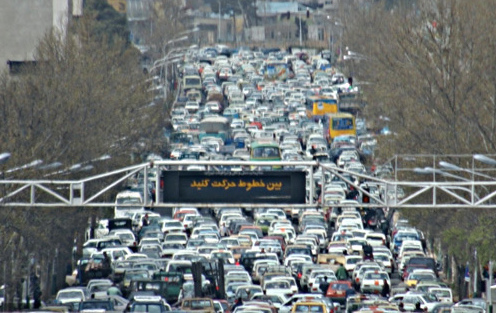 As a result, in most of these cities numbers of unhealthy, very unhealthy or hazardous days per year have remained above a hundred during several years, forcing the government to shut them down sometimes for days at a time. The photo below shows a comparison of Tehran's air with and without rain.
As a result, in most of these cities numbers of unhealthy, very unhealthy or hazardous days per year have remained above a hundred during several years, forcing the government to shut them down sometimes for days at a time. The photo below shows a comparison of Tehran's air with and without rain.
Even after reduction in some of these pollutants, air in these cities remains among the world's most unhealthy to breathe. There are no independently verifiable information about actual effects on people's health, and the government has not taken actions for tracking medical records or providing information in regards to managing the consequences for public health;
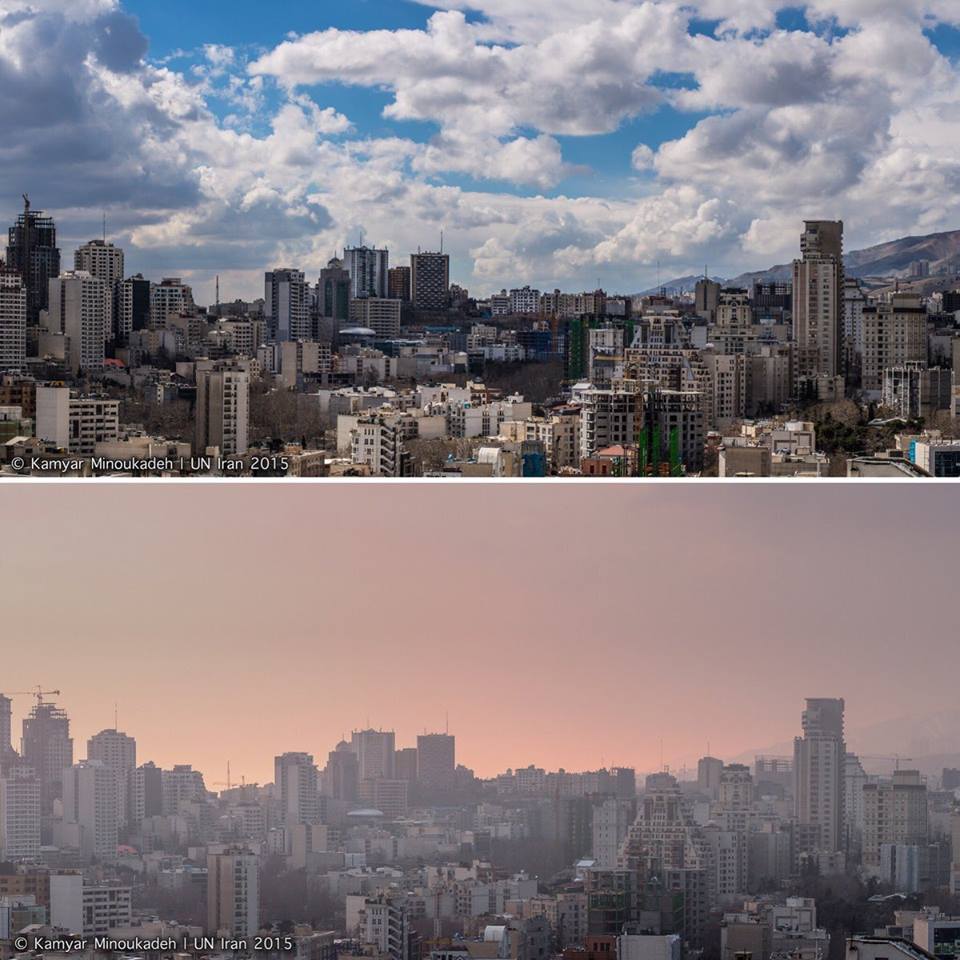 while warnings signs have been here for a long time. For example as far back as 2009 medical records showed that on days of high air pollution in Tehran visits to medical centers for respiratory problems went up by sixty percent, and it was stated in the parliament that life expectancy in the city had gone down by five years.
while warnings signs have been here for a long time. For example as far back as 2009 medical records showed that on days of high air pollution in Tehran visits to medical centers for respiratory problems went up by sixty percent, and it was stated in the parliament that life expectancy in the city had gone down by five years.
It is common knowledge among the people that in these cities cancer, strokes, headaches and feelings of depression have sharply increased and every year tens of thousands of people die unnecessarily directly as a result of air pollution. While the government has muzzled media's reporting about public health consequences, there have been haphazard cases of reports hinting that the real extent can only be much worse than officially acknowledged. For example in December of 2010 after another period of "inversion of air" in Tehran, despite a ban on experts talking to the media an advisor to the mayor told a news agency, "What people in Tehran inhaled in the past few weeks was simply poison." If by "poison" he meant benzene, a cancer-causing agent eliminated elsewhere in the world, which at that point had been present many times above safe limits for some time, breathing it went on for another four years until 2014, and even then it was reported to have been reduced only to a one-percent level. Another example goes back to 2016 when a Tehran newspaper reported that every year ninety cases of "Black Lungs Disease", a disease of coal mine workers that has otherwise been eradicated in the world, were being diagnosed in the city. The report said there must have been many more cases that had not been diagnosed or reported.
2. Water Bankruptcy, Desertification and the Economy
Until about thirty years ago this country's water needs for agriculture, industry and residential use were sustainably supported by the land's natural cycles of precipitation and renewal of surface and groundwater resources.
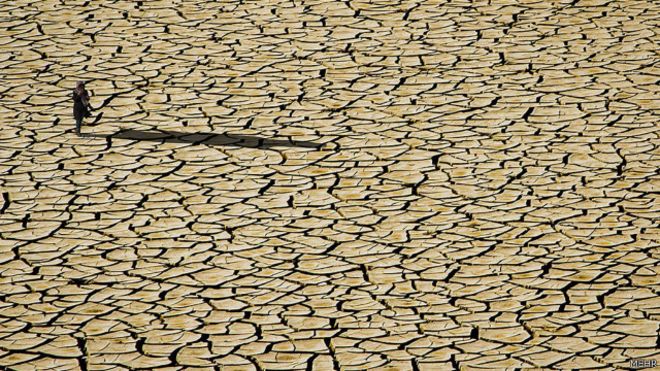 To provide for demands of increasing populations and urbanization the government has since resorted to excessive construction of dams and inter-basin water transfer projects and digging of more wells, while neglecting the long term environmental and economic consequences, and neglecting the need for controlling consumption and increasing efficiency instead. According to some experts, it is as a result of these alterations in the natural ecosystems that precipitation has declined in the country by up to 40% of its historical normals; and it is for these reasons that numerous lakes, rivers, marshland and aquifers of groundwater have been severely depleted or completely dried.
To provide for demands of increasing populations and urbanization the government has since resorted to excessive construction of dams and inter-basin water transfer projects and digging of more wells, while neglecting the long term environmental and economic consequences, and neglecting the need for controlling consumption and increasing efficiency instead. According to some experts, it is as a result of these alterations in the natural ecosystems that precipitation has declined in the country by up to 40% of its historical normals; and it is for these reasons that numerous lakes, rivers, marshland and aquifers of groundwater have been severely depleted or completely dried.
As a result the country has become the world's worst for desertification and soil loss, and it has lost ninety percent of its wildlife.
 Also as a result of loss of underground water tables, land sinking (subsidence) has widely damaged agricultural and urban areas and become a serious safety threat to people. Together with the effects of global warming, instead of normal rainfall we more often have erratic periods of intense rain now, which have caused flooding and displacements of hundreds of thousands of people and loss of lives and livelihoods. Again much of the losses resulting from these floods could have been avoided with simple measures like opening gates of dams in time when weather forecast said so, or not building roads and railroads that blocked natural flood relief paths.
The video on the right shows cars being swept away as they were travelling on an entrance road to a major city. This road was built on a natural flood relief path that had always protected the ancient city.
Also as a result of loss of underground water tables, land sinking (subsidence) has widely damaged agricultural and urban areas and become a serious safety threat to people. Together with the effects of global warming, instead of normal rainfall we more often have erratic periods of intense rain now, which have caused flooding and displacements of hundreds of thousands of people and loss of lives and livelihoods. Again much of the losses resulting from these floods could have been avoided with simple measures like opening gates of dams in time when weather forecast said so, or not building roads and railroads that blocked natural flood relief paths.
The video on the right shows cars being swept away as they were travelling on an entrance road to a major city. This road was built on a natural flood relief path that had always protected the ancient city.
By statement of the Director of the Environments Protection Department, the country is now in water bankruptcy as its water consumption is going above its renewable limits and reaching ten percent of its nonrenewable reserves, a situation which would never be allowed by any responsible governments anywhere.
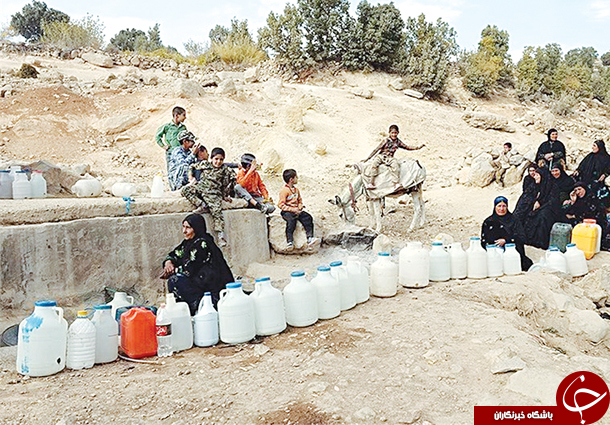 According to the Director's calculations, consequently in some fifteen years fifty million people will need to move out of this country! Although this official seems to think that fifty million people "too many" here can simply pack and immigrate to a more hospitable country, in reality the situation for these people will not and has not been so easy at all. According to publications of the government itself there are now thirteen million people in the country who are squattering around peripheries of urban areas struggling to survive under very unhealthy and insufficient conditions. Many of these people are former farmer families who had been living on their ancestral lands for centuries before their villages went dry of water.
According to the Director's calculations, consequently in some fifteen years fifty million people will need to move out of this country! Although this official seems to think that fifty million people "too many" here can simply pack and immigrate to a more hospitable country, in reality the situation for these people will not and has not been so easy at all. According to publications of the government itself there are now thirteen million people in the country who are squattering around peripheries of urban areas struggling to survive under very unhealthy and insufficient conditions. Many of these people are former farmer families who had been living on their ancestral lands for centuries before their villages went dry of water.
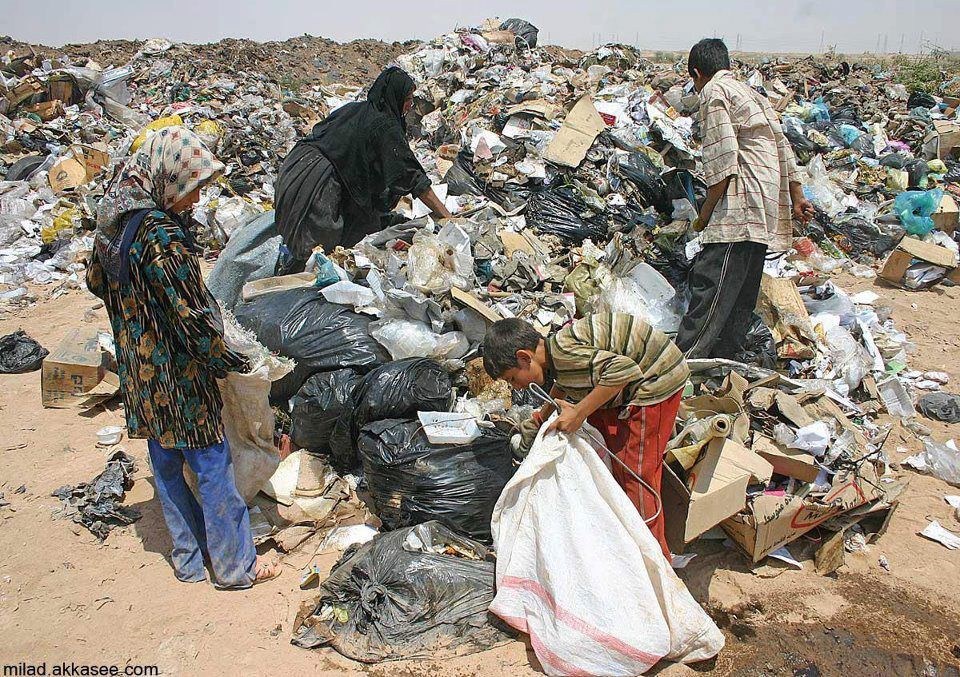 An estimated four million others still staying are lucky to get rationed amounts of drinking water only delivered to them in trucks.
An estimated four million others still staying are lucky to get rationed amounts of drinking water only delivered to them in trucks.
Amid these conditions, there are still no signs from the government of plans to change course. For example in 2019 we had reports that for water they had dug a well three thousand meters deep. A member of the parliament claimed that this well tapped into some kind of an underground river that flowed down from the Hymalayas thousands of kilometers away (and therefore it was renewable), a statement which according to experts has no basis in the science of geography and can only be characterised as fiction.
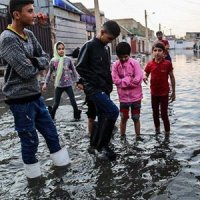 In other words what has happened is only deeper extraction from the country's nonrenewable underground water tables. Another example is plans for another water transfer project this time from the Caspian sea in the north to a province hundreds of kilometers south, also not approved in its entirety by any experts because of its possible environmental consequences. The same experts have been saying for a long time that instead of projects like these water should be saved by improving irrigation methods, controlling losses in urban distribution systems and recycling of waste water; the last recommendation especially quite obvious when sewage is still let out into rivers, lakes and gulfs, and it sometimes takes over streets and houses and hospitals in a major city. The photo on the left shows children standing on sewage in this city.
In other words what has happened is only deeper extraction from the country's nonrenewable underground water tables. Another example is plans for another water transfer project this time from the Caspian sea in the north to a province hundreds of kilometers south, also not approved in its entirety by any experts because of its possible environmental consequences. The same experts have been saying for a long time that instead of projects like these water should be saved by improving irrigation methods, controlling losses in urban distribution systems and recycling of waste water; the last recommendation especially quite obvious when sewage is still let out into rivers, lakes and gulfs, and it sometimes takes over streets and houses and hospitals in a major city. The photo on the left shows children standing on sewage in this city.
3. Desertification and Air Pollution in Regions
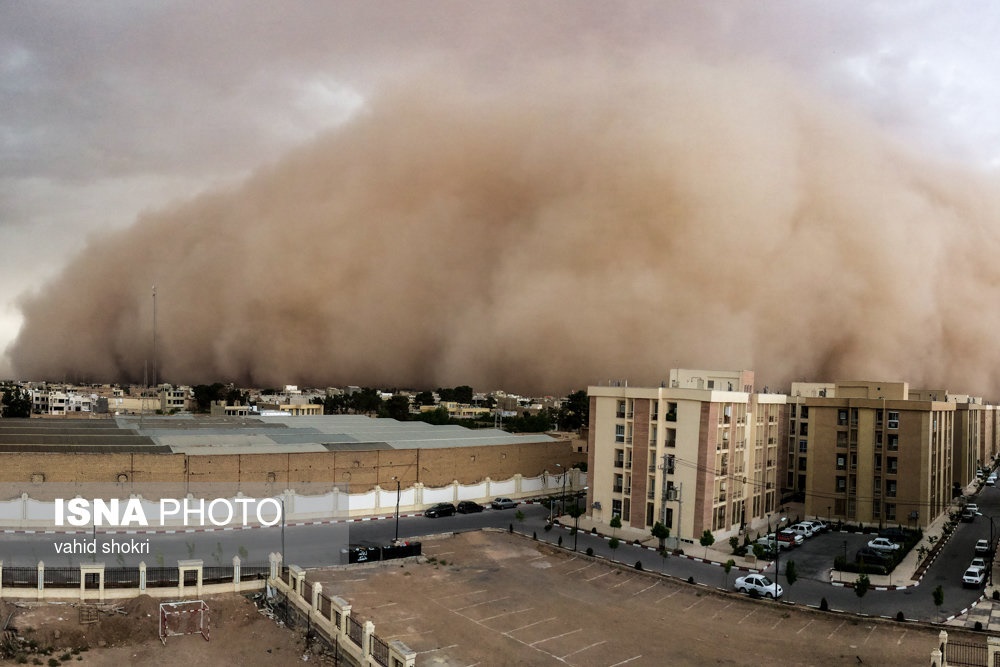 One of the consequences of desertification in the country of 1.6 million square kilometers has been spread of desert dust throughout western, central and south eastern regions. In western and eastern parts these conditions have been exacerbated with similar damages in the neighboring countries. As a result, depending on wind conditions millions of people are now often faced with concentrations of desert dust in their breathing air and physical environment that reach tens of times above allowable limits. In some regions periodically, sometimes several times a year dust storms form and attack densely populated areas, causing breathing problems and accidents and disrupting people's lives.
One of the consequences of desertification in the country of 1.6 million square kilometers has been spread of desert dust throughout western, central and south eastern regions. In western and eastern parts these conditions have been exacerbated with similar damages in the neighboring countries. As a result, depending on wind conditions millions of people are now often faced with concentrations of desert dust in their breathing air and physical environment that reach tens of times above allowable limits. In some regions periodically, sometimes several times a year dust storms form and attack densely populated areas, causing breathing problems and accidents and disrupting people's lives.
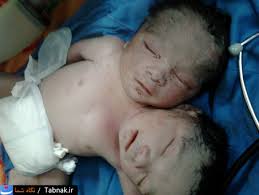
These particulate matter pollutants are also known to cause diseases, and in the south western regions it is suspected that their movement spreads radioactive uranium previously used in weapons in Iraq. Radioactive pollution can cause cancer, damage to the DNA and birth defects. As a result of dust haze pollution, a city in the east of the country became the most polluted in the world in 2016.
4. Long Time Supplier of the World's Energy Yet the World's Most Polluted and Unhealthy Place to Live
In the south western region of the country home to seven million people a number of additional sources add still more pollution to all of the above.
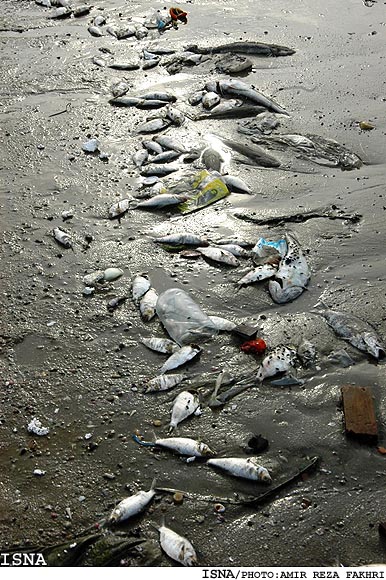 Most notably Iran's oil industry, among the largest in the world has been operated here for a century still using outdated, substandard and polluting technologies.
Most notably Iran's oil industry, among the largest in the world has been operated here for a century still using outdated, substandard and polluting technologies.
An example is a port city here by the Persian Gulf which because of dumping of waste from petrochemical operations has become the world's worst place for mercury contamination.
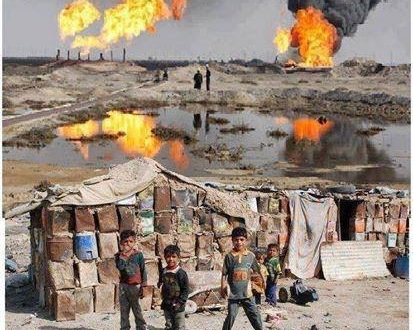 As far back as 2010 local authorities had reported to the central government and the parliament that hundreds of babies had been born here with birth defects, and a number of men had become sterile. Later studies showed that mercury present in the people's hair and nails and in the sea wildlife and birds was much higher than acceptable levels. The people had already found out the hard way and stopped eating the fish, one of their main sources of food and income.
As far back as 2010 local authorities had reported to the central government and the parliament that hundreds of babies had been born here with birth defects, and a number of men had become sterile. Later studies showed that mercury present in the people's hair and nails and in the sea wildlife and birds was much higher than acceptable levels. The people had already found out the hard way and stopped eating the fish, one of their main sources of food and income.
Another example is "flaring" or open-air burning of "sour gases" that are released with extraction of crude oil from underground. Burning of these gases close to populated areas without proper filtration is known to cause asthma and acid rains, and for these reasons it is made illegal in many countries.
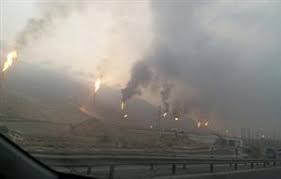 In 2011 flaring made the largest city in this region with 1.4 million population the most polluted in the world. In this city, first rainfalls of the automn season (which attract and bring down the airborne pollutants with raindrops) caused breath shortness to tens of thousands of people for several years in a row. After some fifty years of promises we finally had announcements in 2018 that flaring around this city had been controlled. Even so, with rainfalls we still have thousands of people who cannot breathe here, and no one among the authorities is able to identify the precise cause.
In 2011 flaring made the largest city in this region with 1.4 million population the most polluted in the world. In this city, first rainfalls of the automn season (which attract and bring down the airborne pollutants with raindrops) caused breath shortness to tens of thousands of people for several years in a row. After some fifty years of promises we finally had announcements in 2018 that flaring around this city had been controlled. Even so, with rainfalls we still have thousands of people who cannot breathe here, and no one among the authorities is able to identify the precise cause.
Flaring still goes on elsewhere in this region. In another town the pollution is so bad that oil workers cannot stay for more than a few years and remain healthy too.
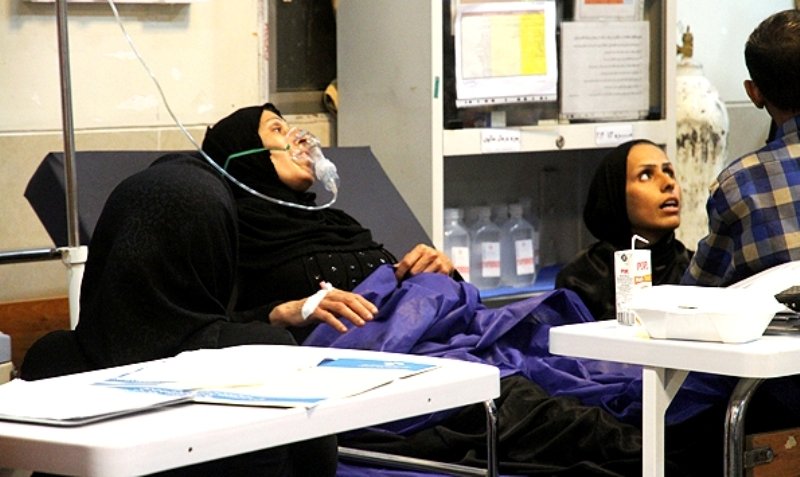 The country's director of the environments department has said that personally he would not stay in this town for more than two or three days. As elsewhere in the country, while the government and its contractors take away billions of dollars of revenue from their operations here and spend it in ways that have little to do with the people's basic needs.
The country's director of the environments department has said that personally he would not stay in this town for more than two or three days. As elsewhere in the country, while the government and its contractors take away billions of dollars of revenue from their operations here and spend it in ways that have little to do with the people's basic needs.
5. Social and Political Conditions and Why You Should Help In Iran the central government is in full control of the country and responsible for protection of the living environments. Most of these damages have been preventable, and in fact a direct result of mismanagement or inaction by the government itself. These damages have been known for years and sometimes decades, and solutions have existed within reach, and yet for too long too little has been done about them.
There have been civic organisings, protests and demands from the people that have been met with silence or oppression. Outside of this country there have been some condemnation from world governments and civil society organisations but without real results.
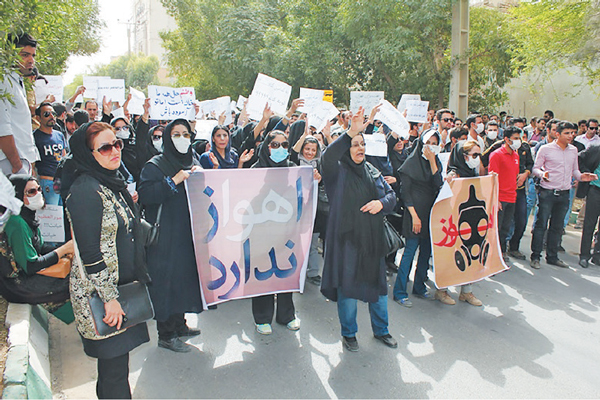 Otherwise lack of effective media coverage and possibilities for communication with the people have kept the people outside uninformed.
Otherwise lack of effective media coverage and possibilities for communication with the people have kept the people outside uninformed.
Experience has shown that this government feels it needs to respond to international public opinion. Also the people of this country are young and educated and active (sixty percent under thirty including millions of unemployed university graduates). If they know that they are not alone and able to connect with people outside, they will feel much better supported and encouraged about solutions and actions that ultimately need participation from all of us.
Looking beyond borders of this country and from a global standpoint, we know that in our interconnected world today we all face similar and intertwined challenges with regards to conservation of our living environments, protection of our public health and building of sustainable economies that can work for all of us and our future generations. What we can learn from problems and solutions in one country can be helpful in other situations where similarities or interdependencies may exist. In the case of this country for three more reasons it should also be a priority for all citizens of the world: first, the scale of its environmental problems and their consequences making them more urgent, and at the same time a good case study internationally; second, the country's strong geopolitical influence on human rights, peace, security and democracy in the region and in the wider world; and third, the fact that international attention, while so far nearly absent here, holds good potential for changing the balance of forces and making real differences.
6. What We Do Fortunately the internet and the social media that many of us around the world have access to enable us to communicate with each other and with the people of this country. Considering only the world's biggest social media platform (Facebook) today, more than two billion of us from almost all countries of the world have an account with it and visit nearly every day, where about half (over one billion of the members) can speak with each other in the world's most global language English, and these numbers are growing. And of course there are more social media networks that can reach additional audiences. Using these media, sharing information and having conversations can be organised by even a small number of volunteers and little amounts of money. Of course to be trusted and effective, all activities must be bound by democratic principles of transparency, accountability, inclusiveness and independence from influence from special interests.
We are the only citizens' initiative in the world to do so with these goals and principles. We base our reports and analyses on qualified translations of media reports and expert social media conversations that have originally been published in the native languages. Written articles and videos we have published on our campaign Facebook page so far present an overview of what has been happening with living environments in this country in the past thirty years, and include analyses of social and political context; and we continue to keep our audiences up to date with more reports and analyses as they become available. So that people from outside and inside the country can communicate without language barriers, we include Persian translations of our posts as much as possible, and certainly always translate Persian visitors' comments to English and any replies back to Persian.
In a short period of time our Facebook page together with our website have got thousands of organic likes and shares from people all over the world; and our advertisements on Facebook have got an average of ten percent response rate (Of every hundred people who have seen them an average of ten have responded), and this is ten times more than the average response rate for Facebook ads in general.
7. What You Can Do Matters of environments are technical and social and political at the same time, and when about a country other than one's own and presented in a second or third language can take time and mental concentration to read or watch; but in our world today informing ourselves and communicating about these issues are social responsibilities that we all should care about. We make our best efforts to make our presentations in video more than text, and in nontechnical language so that everyone in our audiences from youngest in high school to oldest in retirement can easily follow.
By reading or watching you can find out about important facts and analyses that matter to you, but often not published anywhere else internationally; and by sharing and commenting you can help get more attention to the issues, create conversations and encourage other people to do some of the same, and at the same time hold governments and media accountable. And the nice part is that you can do all this using only some of the time that you spend on your mobile or computer every day, knowing that your help is going where it is very much needed and will make a difference. Please like our Facebook Page using the link below (You can click on the Page title in white print on the top left corner of the link to open it in a new tab. Using the "..." symbol below the cover photo you can then open the "Follow" menu and set your notifications to your preferences.)
Our campaign poster contains a brief description and links to our website and social media. It is suitable to print and post on boards in public spaces like libraries, schools and bookstores. Please download and share. Click on this link to open the PDF file in a new tab:
Air, Water and Economy for Iran Poster (Click to open in a new tab)
This campaign is hosted by a parent project called World Media in English. This project is intended as an internet-based platform for this and similar initiatives from any communities of the world, and it is supported by Simon Fraser University's Public Interest Research Group in Canada (www.sfpirg.ca). We welcome expert and general help for this campaign, or for any other matters of social justice and democracy in the world.